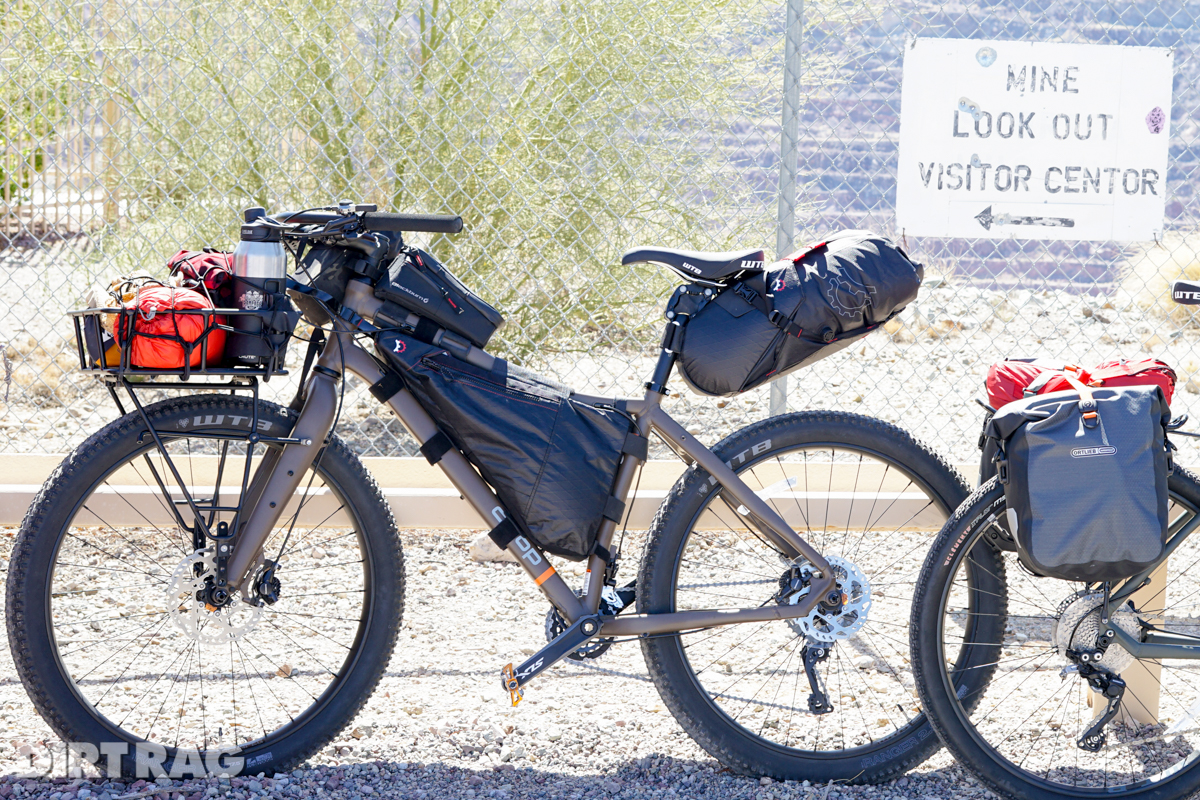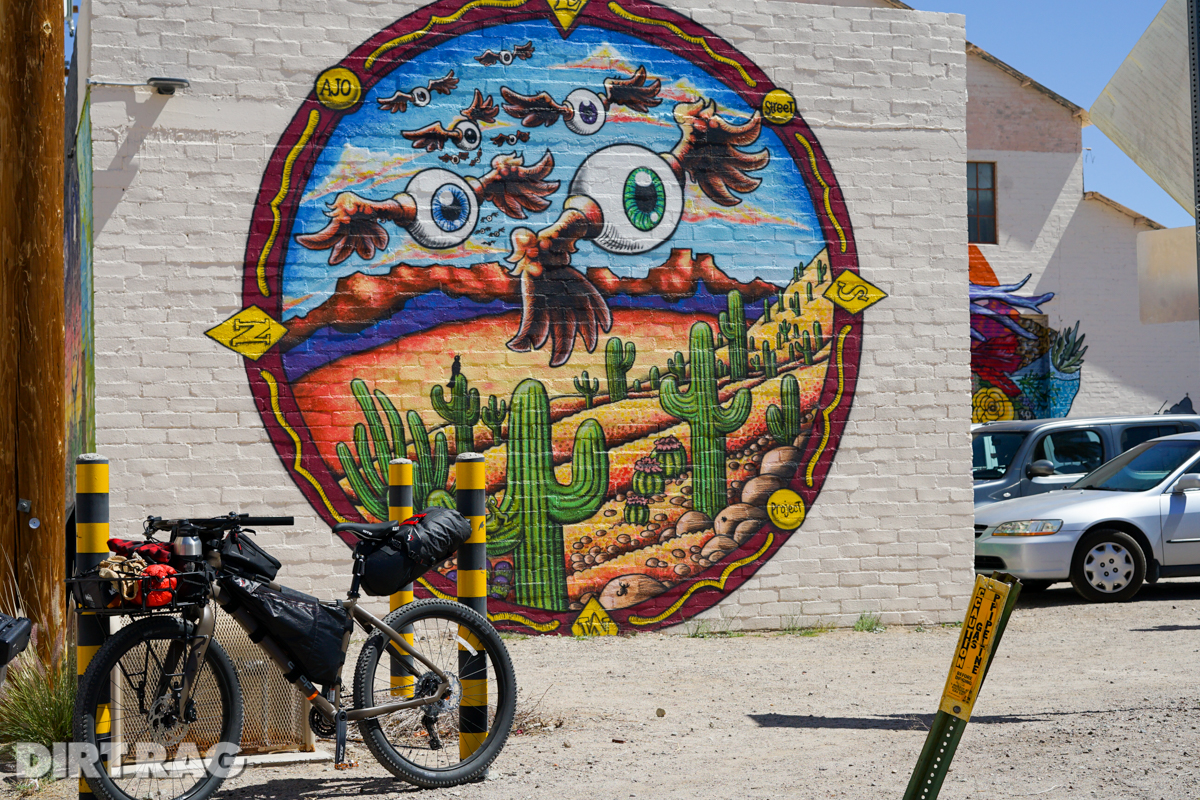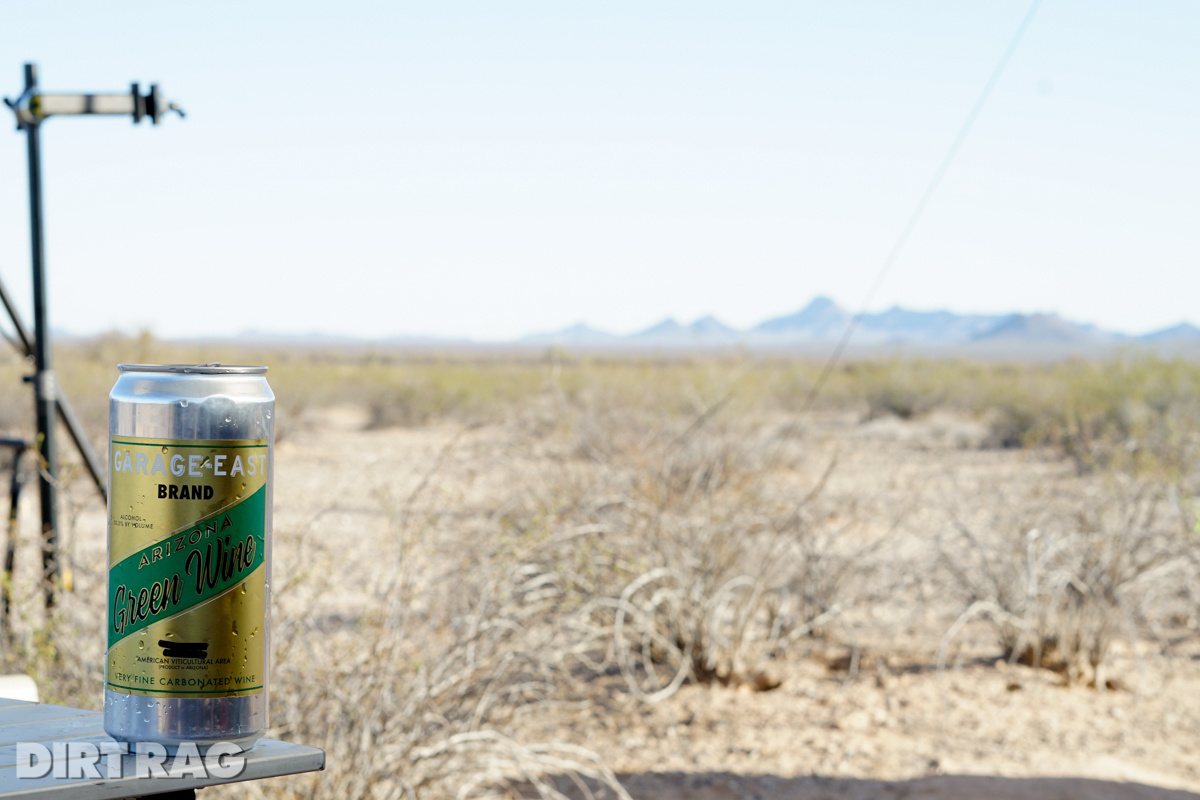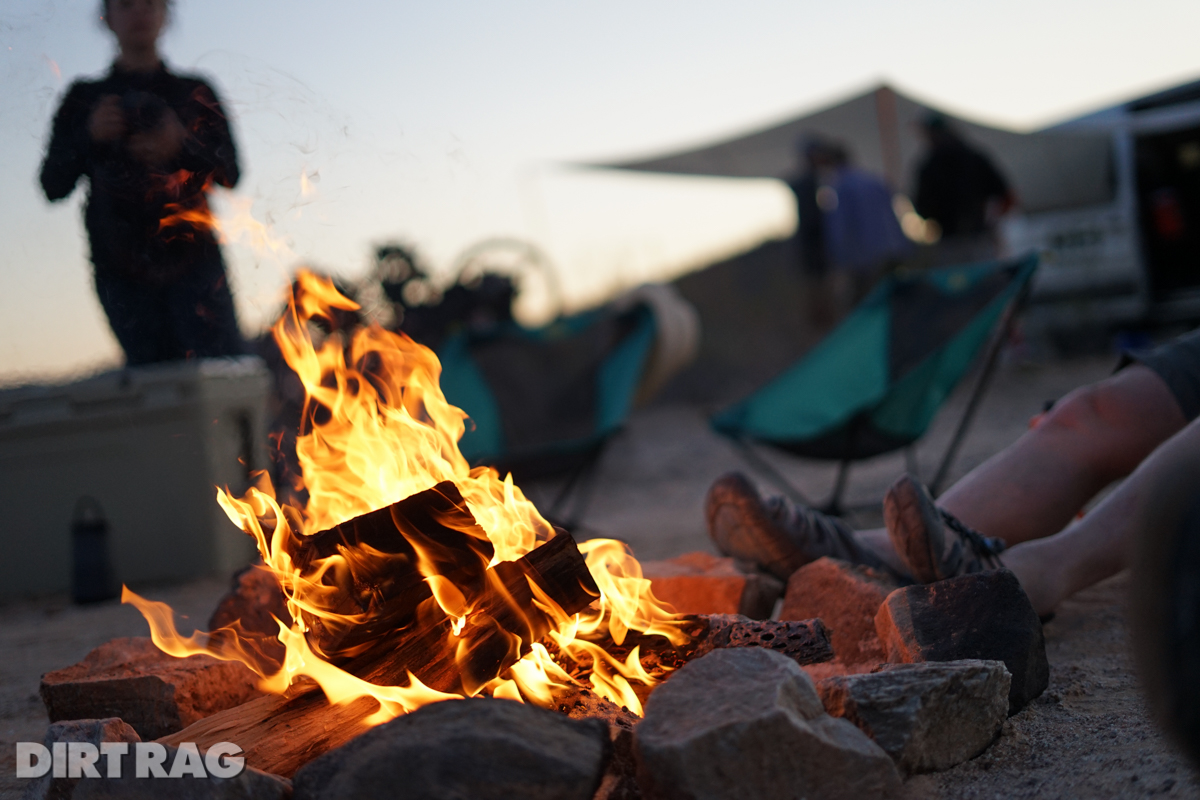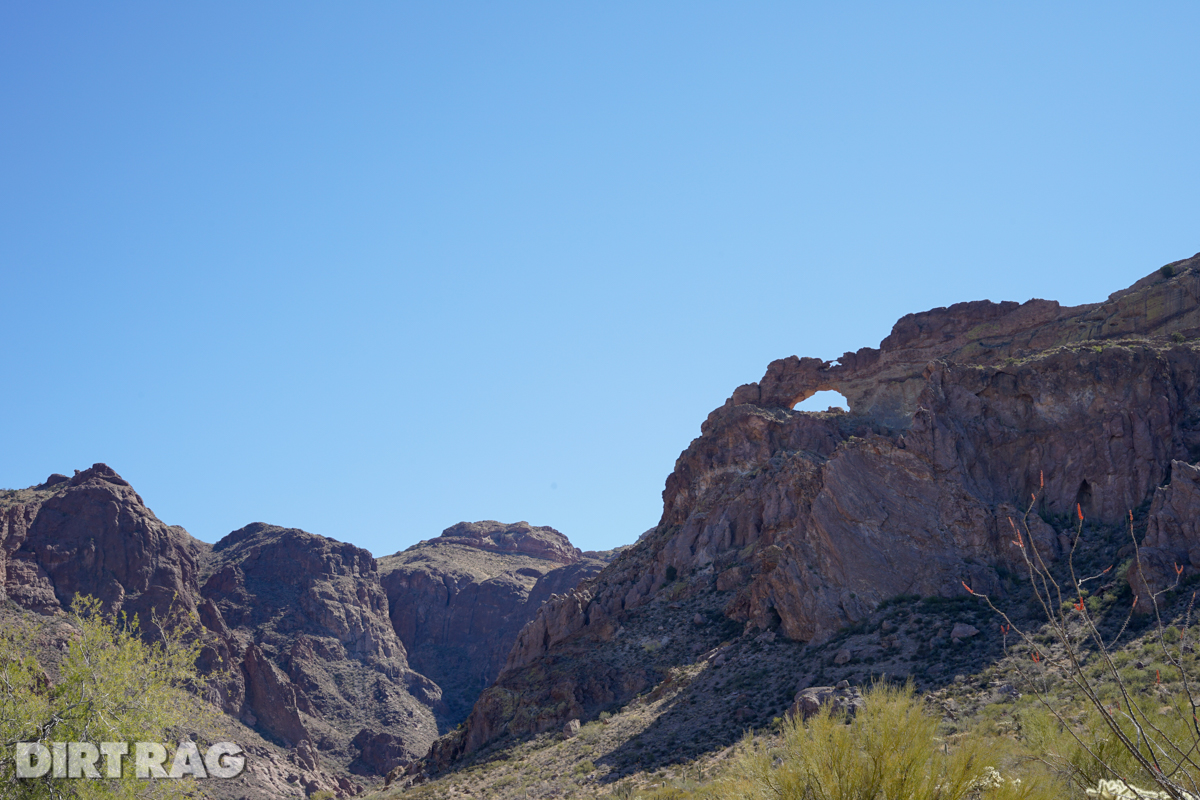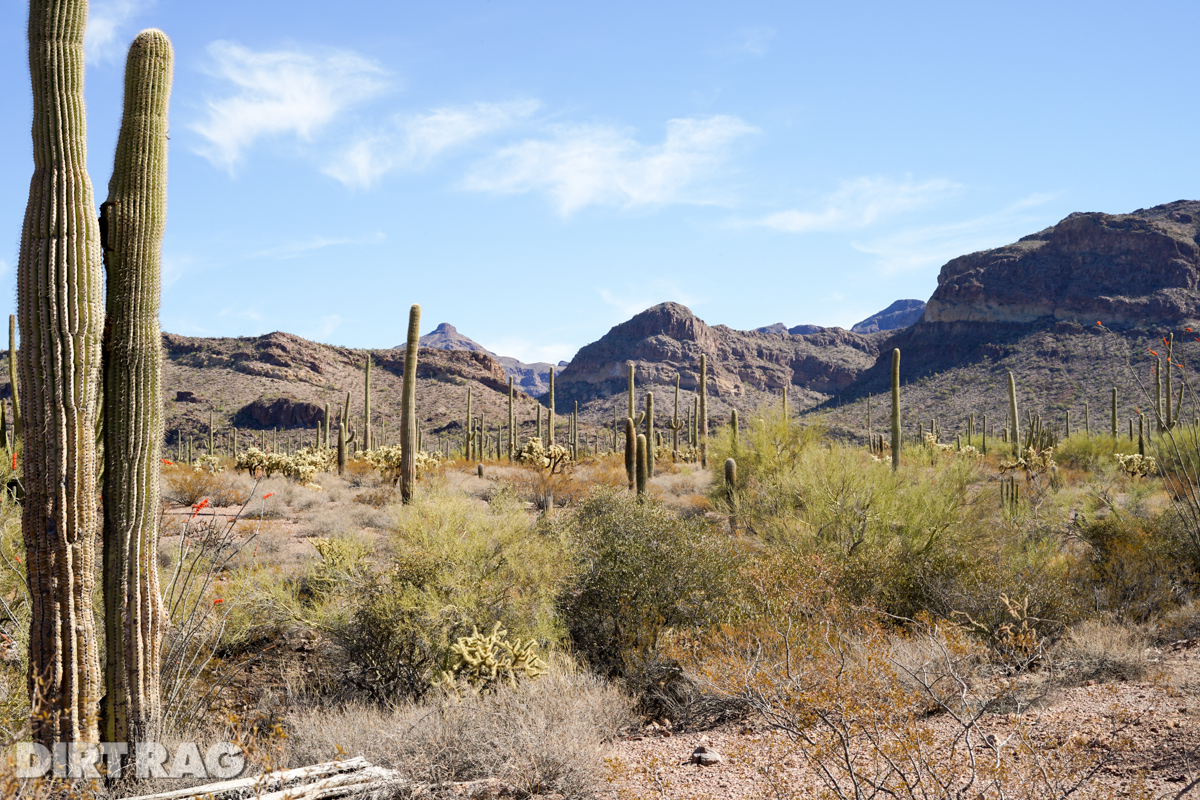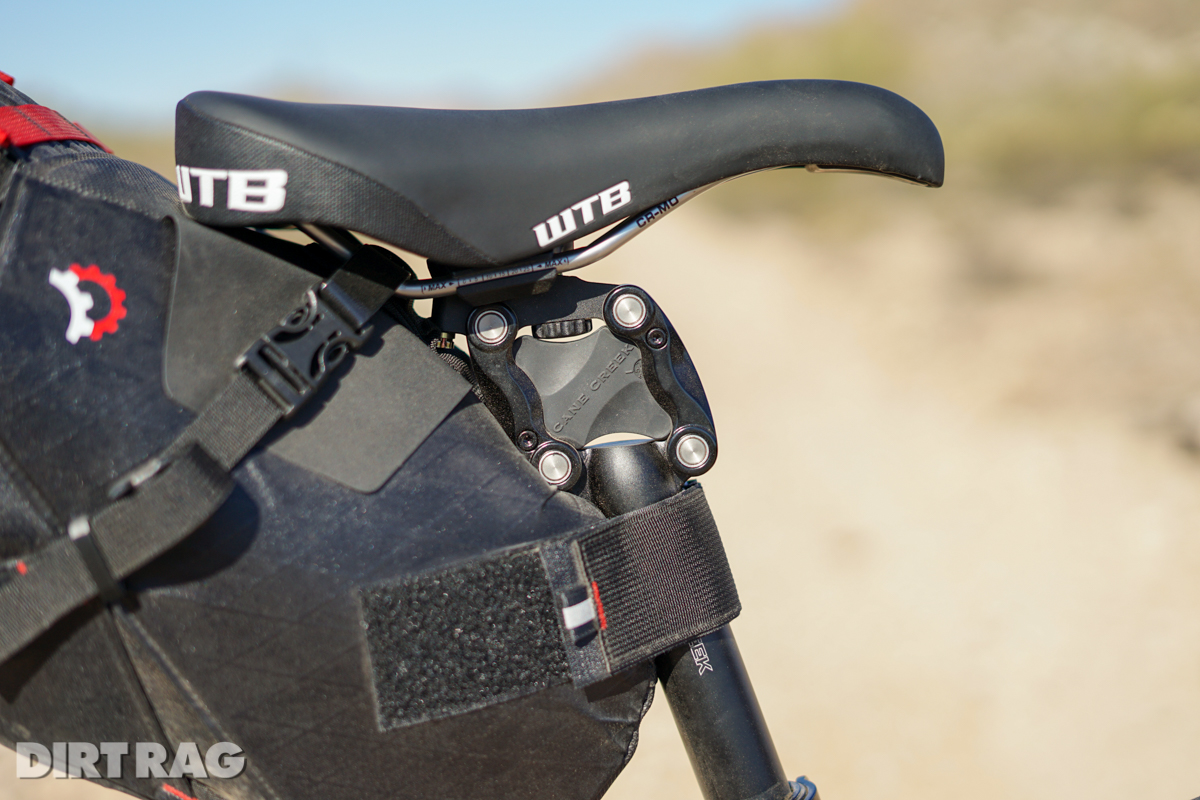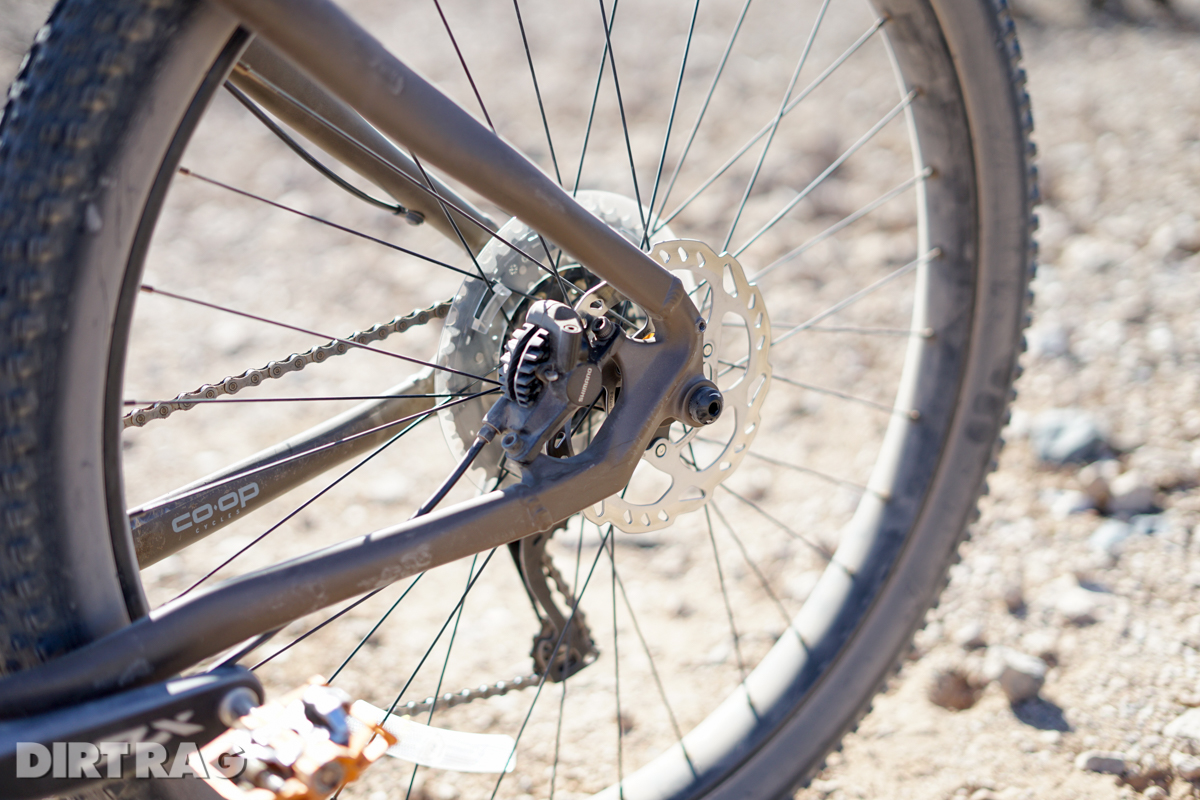Sun, sand and border fences: Arizona bikepacking with REI’s Co-op bikes
Originally posted on May 18, 2018 at 8:07 amA few months back, REI took some media folks down to Arizona for a bikepacking trip on new bikes from Co-op Cycles. Last year, Co-op replaced REI’s long-standing house brand bikes, Novara. From the looks of the new bikes, the changes go much deeper than just a new name on the downtube.
This is the new Co-op ADV 4.2, the bike I rode while in Arizona.
And here it is in stock form. We’ll come back to this later.
The ride started and ended in Ajo, a former mining town in the process of recreating itself as artist enclave/tourism magnet/retirement mecca.
This is the copper mine that supported the town for decades. It is over a mile across. It closed and the town lost a huge amount of its population.
This is the last copper plate made from copper extracted from the mine. It shut down in the mid-80s.
After a quick tour of the small downtown, we headed south on dirt roads to make camp on BLM land, just outside Organ Pipe Cactus National Monument.
What is Green Wine? I am still not sure, but it comes in a big can and tastes……..weirdly good?
It was cold enough for a fire.
In the morning we rode south until we hit the border, then rode alongside it for miles on the dirt road that runs parallel to the Mexican highway on the other side.
We stayed the next night in an established campground with toilets and showers and more van support from the REI Adventures crew. The next day we stashed our gear in the van and spun out a pleasant 25 miles of sightseeing on Ajo Mountain Drive.
We finished with quick showers and lunch at the Sonoran Desert Inn.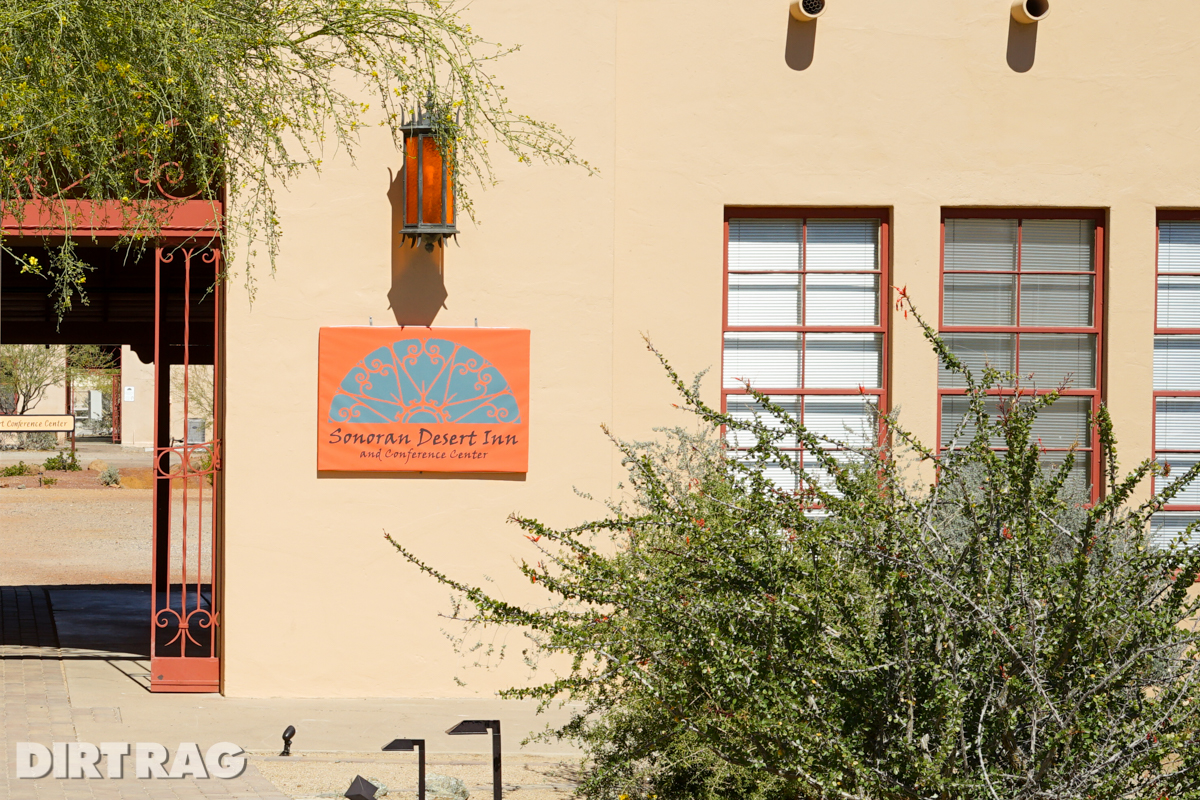
It was a dry, warm, pleasant trip, made more pleasant with van support. This route would require a lot more planning and preparation if we didn’t have food and water being carted around for us. But not undoable. The ADV 4.2 has plenty of load capacity, even for a few days of food and water in the desert.
The Bike
REI showed up with a bunch of bags and racks and gave the gathered media free reign to set up bikes. I ditched the stock front and rear racks and swapped on a Revelate seat and frame bag. Up front is Blackburn Local rack/basket. I brought my own Blackburn top tube bag, and Porcelain Rocket Slinger camera bag.
Essentials are right at hand: Sunscreen and camera. Jones bar and thumbshifters are comfortable and sturdy choices.
Double insulated bottle, tent, sleeping bag, a hip pack of random stuff and a straw hat found a home up front with plenty of room left over for more food and drink.
There were many thuds on the dirt roads in AZ and the Cane Creek Thudbuster busted them all. A brilliant spec choice. The WTB Pure V saddle supportive enough for miles and miles of flat roads.
The double crank is another great spec, but with few steep hills on the ride, I left it in the big ring the whole time.
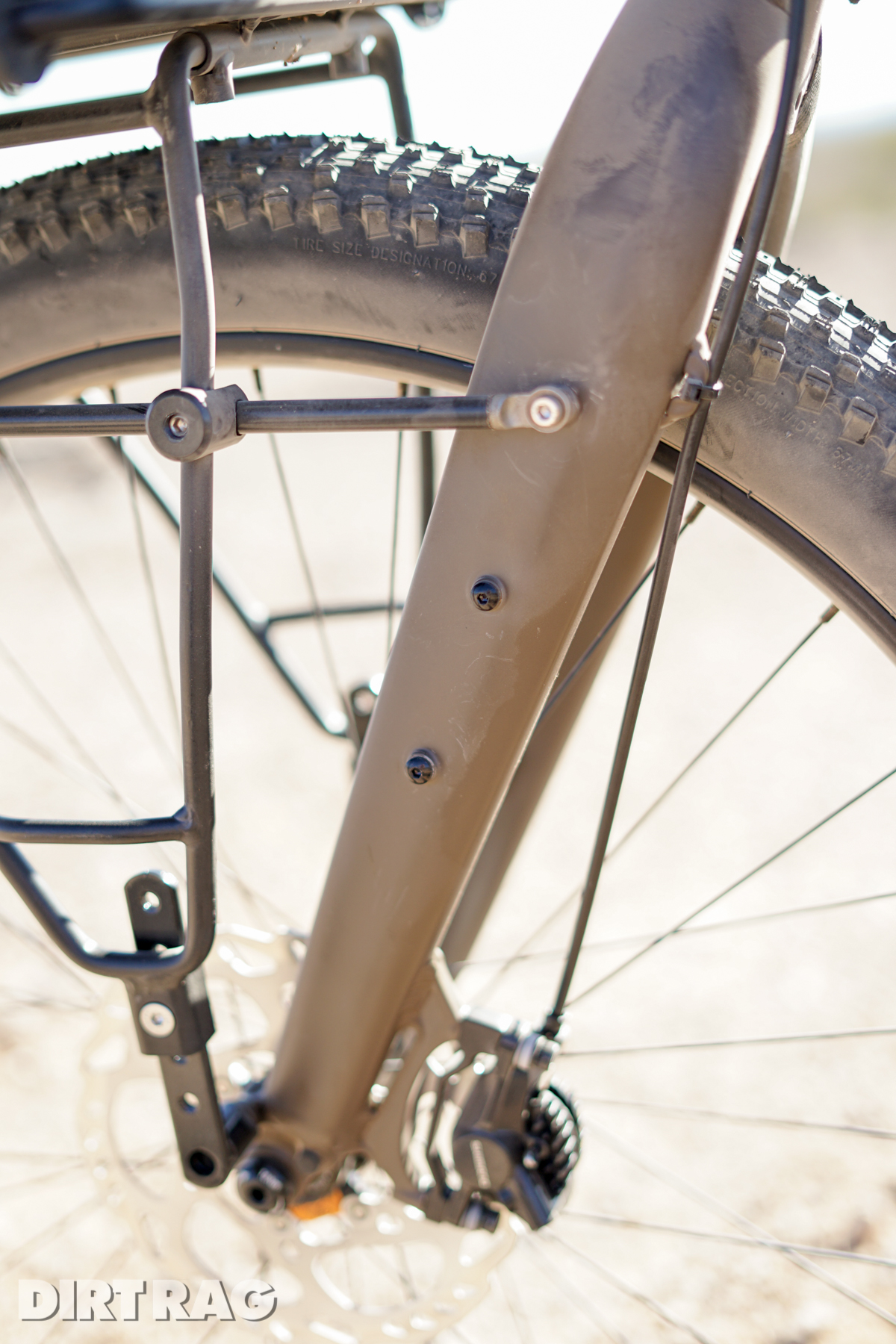 One of four bottle mounts; triple mounts on each fork leg and under the downtube, and a standard set on the top of the downtube. The seat tube does NOT have bottle mounts, but it does have routing for an internally routed dropper post. Those tires are WTB Ranger 2.8s with the Tough casing, an excellent choice on the rough and rocky terrain. I even used them to good effect powering my way through a long section of sand as my fellow media types and REI employees fell by the wayside.
One of four bottle mounts; triple mounts on each fork leg and under the downtube, and a standard set on the top of the downtube. The seat tube does NOT have bottle mounts, but it does have routing for an internally routed dropper post. Those tires are WTB Ranger 2.8s with the Tough casing, an excellent choice on the rough and rocky terrain. I even used them to good effect powering my way through a long section of sand as my fellow media types and REI employees fell by the wayside.
Hydraulic discs, thru-axle and rack mounts.

Co-op takes a very straight-forward approach to this bike. Rather than attempting to create a bike that claims to be good at everything from trail riding to bikepacking, the ADV 4.2 is “just” a touring bike for rough terrain. The geometry is pretty old-school, but perfectly suited to a rigid bike with big tires. The $1,900 price is reasonable considering the quality of the components and the very sturdy front and rear racks.
The handling is neutral and capable, and between the Thudbuster seatpost, WTB saddle and Jones bars, I was very comfortable, even over some pretty rough terrain. There were some skinnier-tired, drop-bar ADV bikes on the trip as well, but the rocky roads and sandy conditions make me think the plus-tired touring bike was the better choice for this route, and least from a comfort and fun standpoint.
| XS | S | M | L | ||
| Height Range | 5’0″-5’3″ | 5’3″-5’6″ | 5’6″-5’9″ | 5’9″-6’0″ | 6’0″-6’3″ |
|---|---|---|---|---|---|
| Reach | 390.5 | 406 | 419.5 | 432.9 | 443.2 |
| Stack | 573.9 | 587.1 | 606 | 624.9 | 653.3 |
| Effective Top Tube | 560 | 580 | 600 | 620 | 640 |
| Seat Tube Center-Top | 330 | 370 | 420 | 470 | 520 |
| Standover Height | 679.6 | 708.6 | 744.6 | 778.4 | 814.3 |
| Head Tube Angle (degrees) | 70.3 | 71 | 71 | 71 | 71 |
| Seat Tube Angle (degrees) | 73 | 73 | 73 | 73 | 73 |
| Wheelbase | 1084.3 | 1193.7 | 1113.7 | 1113.7 | 1153.7 |
| Chainstay | 455 | 455 | 455 | 455 | 455 |
| Fork Offset | 55 | 50 | 50 | 50 | 50 |
Other than the Trek 1120 29plus touring bike, this isn’t much in the way of stock bikes that compete directly with the ADV 4.2. I would expect that to change, as this bike could be a very versatile addition to many riders’ collection. While the 27plus tires might be overkill for most touring, they open up possibilities for connecting routes that encompass pavement, dirt and trails. With fenders and 29-inch wheels, this would be an excellent winter commuter. Having a dedicated touring/bikepacking bike means your mountain bike can stay in shred mode all the time, no need to spend hours changing tires and installing racks and bags when the mood strikes for a tour.
More info on the REI website.
[wonderplugin_gallery id=”59″]


